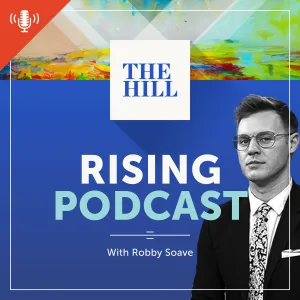History tells us the danger the economy faces is recession, not inflation
The Federal Reserve announced on June 12 that it is not lowering interest rates at this time. It is standing pat, although inflation is falling, consumers are limiting purchases, and big national chains are cutting prices for hundreds of products. The risk now is recession, but that is not the way the Fed sees it.
This is not the first time in U.S. history that policymakers have opted to make borrowing more expensive, risking recessions as a result. Such restrictive credit policies prevailed with disastrous effects in the 1830s, the 1870s, the 1890s, during the Great Depression from 1929 into 1939 and in the 1980s.
These episodes, all of which hurt ordinary people who depend on credit, should be signaling policymakers that falling prices (deflation) is far more dangerous for most Americans than inflation. Despite this history, however, belief in tight money policies endures at the Fed and among conservatives even though low rates and more government spending would be better for ordinary people and the country.
Battles over policies relating to the cost of credit and institutions to provide it go way back. Already in the 1600s, some New Englanders understood that gold and “hard money” were not plentiful enough to allow the development of the continent’s immense resources.
Reasonably priced credit, for example, was needed to finance the development of wood products that could be sold on world markets. It was difficult, however, to create stable banks to provide such credit, but attempts were made.
Alexander Hamilton, George Washington’s secretary of the Treasury, understood that the country needed mechanisms to expand credit. He created the First Bank of the United States in 1791, depositing government tariff revenues in the bank as the seed capital for the bank. His policies worked.
The U.S. government was on sound enough financial footing by 1803 to borrow from Dutch and English lenders to pay France about $15 million for the Louisiana Purchase. The land bought with government debt is all or part of 15 states in the Midwest and South.
Similarly, the state of New York issued millions in state government debt between 1817-25 to build the Erie Canal. The canal opened up the area around the Great Lakes — Ohio, Indiana, Michigan and Illinois, giving American farmers access to world markets and new immigrants a navigable highway into the resource rich Midwest.
President Andrew Jackson was no Hamiltonian. He ordered the government to stop accepting paper money for purchases of government land, requiring payment in gold or silver. This led to the Panic of 1837 and falling farm prices (deflation), hurting American farmers who were generally borrowers.
Jackson also dismantled the Bank of the United States that worked to stabilize the value of money. This led to decades of financial chaos, wiping out depositors in weak state banks and more struggling farmers in the process.
The federal government issued paper money again during the Civil War. This led to some inflation but also to demand-driven industrial development. In 1873, however, deflationists defeated “Greenbackers” who wanted to keep paper money in circulation. The requirement that payments be made in gold again caused prices to fall and great hardship.
The Panic of 1893 was caused by the collapse of private debt and led to another bout of deflation. The Panic of 1907 led to still more deflation and the creation of the Federal Reserve Bank in 1913. The Fed was tasked with providing lendable reserves to banks when withdrawals risked forcing them to stop lending.
The Fed’s leaders in 1928 and 1929, however, were afraid that providing reserves to maintain lending would lower interest rates, forcing the U.S. off gold. They, therefore, reduced lending instead of increasing it and the deflationary downward spiral of the Great Depression took hold.
President Hoover and Andrew Mellon, his Treasury secretary, believed that reducing government spending would lead to a surge in private investment that would put a floor under falling prices. These rosy expectations failed to materialize, and prices and wages kept falling. With unemployment at 25 percent Hoover lost to Franklin Roosevelt and the Democrats in 1932.
Roosevelt at first criticized his predecessor for not cutting government spending enough. Unlike Hoover and today’s inflation hawks, however, Roosevelt and most Democrats learned. By 1933 and 1934, they were borrowing money for public works and employment projects and to support farm prices. Critics during the 1930s of course kept warning about inflation from government spending, but it never happened.
The government spent more during World War II when all the beliefs about the evils of spending were paused. It pushed the U.S. economy toward years of economic modernization and middle-class growth in the 1950s and 60s.
In summary, U.S. economic history warns that raising the cost of public and private borrowing increases the danger of recession. In 2024, this risk far outweighs the risk of renewed inflation.
Geopolitical challenges from Russia, China and Iran, and today’s fast-changing, disruptive, tech-driven economy instead require more and less costly credit and spending to promote the expansion and modernization of defense industries and civilian economic transformation. The Fed and the Congress, however, are sticking with economic policies that ignore the lessons of history.
Paul A. London, PhD., was a senior policy adviser and deputy undersecretary of Commerce for Economics and Statistics in the 1990s, a deputy assistant administrator at the Federal Energy Administration and Energy Department, and a visiting fellow at the American Enterprise Institute. A legislative assistant to Sen. Walter Mondale (D-Minn.) in the 1970s, he was a foreign service officer in Paris and Vietnam and is the author of two books, including “The Competition Solution: The Bipartisan Secret Behind American Prosperity” (2005).
Copyright 2023 Nexstar Media Inc. All rights reserved. This material may not be published, broadcast, rewritten, or redistributed. Regular the hill posts









